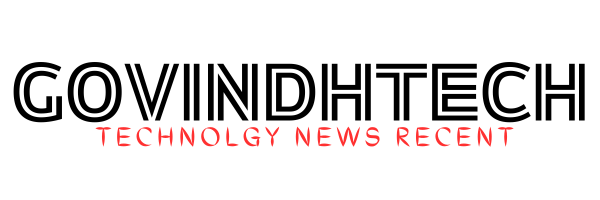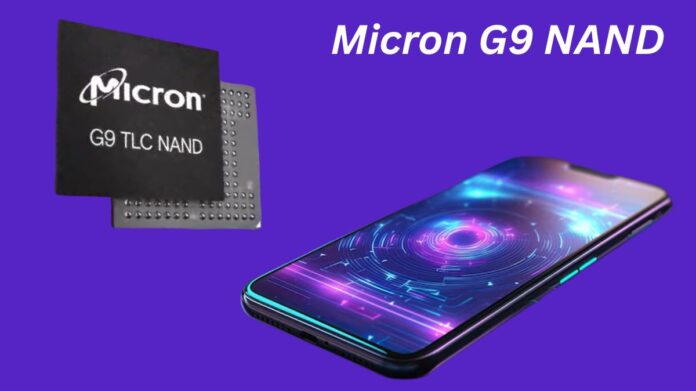High-speed and high-capacity storage are essential for flagship smartphones to meet the demands of modern consumers in fast-paced, multitasking world. An AI assistant in your pocket is becoming a reality as AI technology advances. AI is developing into agentic frameworks, in which models can create, reason, plan, and carry out complex tasks in a multimodal manner on their own. The need for memory and storage in edge devices will increase as a result of this shift.
Micron announced at MWC25 that Micron UFS 4.1 and UFS 3.1 products would be sampling the first Micron G9 NAND for mobile devices. The G9 node, the most recent advancement in NAND technology, is intended to give all storage solutions density supremacy and optimal performance.
G9 NAND mobile UFS 4.1
With its cutting-edge performance and innovation, the Micron G9 NAND mobile UFS 4.1 solution makes premium smartphones faster and more responsive.
Faster speed and reduced latency: Picture a world in which language translation occurs instantly, real-time photo editing is flawless, and your virtual assistant fully understands you. This is the promise of AI-enabled apps that are powered by large language models (LLMs) and are transforming smartphone consumers’ digital experiences. It is anticipated that these services will eventually combine to form potent multimodal AI agents that offer quick, thorough, and contextual digital experiences. Smartphones must have quick access to big datasets, reduced latency, quicker reaction times, and more seamless end-user experiences in order to do this.
Leading this change is Micron G9 NAND mobile UFS 4.1, which provides sequential read and write speeds of more over 4100 MBps. When contrasting G9 UFS 4.1 with its predecessor, G8 UFS 4.0, this notable performance improvement is apparent.
| Metric | 512GB G9 UFS 4.1 compared to 512GB G8 UFS 4.0 | Benefit |
| Sequential write | Improved over 15% | Faster data processing |
| Random read | Improved nearly 10% | Rapid dataset access and handling |
| Random write | Improved nearly 10% | |
| Latency | Reduced long latency (200ms+) distribution | Smoother response |
Larger capacity: One of the elements that makes it possible to have more local processing and computing power is a larger storage capacity. Sensitive data must traverse networks in order to be processed by traditional cloud-based AI systems, which increases the possibility of data breaches. Because Edge AI processes data locally, where it is created, it significantly reduces this risk. A big capacity option of 1TB NAND is provided by Micron’s G9 UFS 4.1 to help drive the demand for on-device data processing, allowing your smartphone to perform intricate calculations at your fingertips.
Smallest and thinnest package: The Micron G9 NAND UFS 4.1 is the smallest and thinnest package available. Its ability to fit into even the most inventive and streamlined smartphone designs is just as important as its capacity. This space-saving design, which features the thinnest 1TB NAND UFS package in the industry at 9x13x 0.85mm1, is perfect for next-generation foldable and ultra-slim smartphone designs and makes more space for a larger battery.
New proprietary features: Micron’s unique firmware features maximize the effectiveness of the data storage devices’ location and method. Together, these developments result in a storage system that is more responsive and efficient, tailored to the needs of AI use cases and daily smartphone performance enhancement.
Data defragmentation: When files are dispersed throughout storage, it becomes more difficult for the device to read them effectively, which is frequently the cause of smartphone delay. This is addressed by Micron’s unique Data Defrag technology, which enables the controller of the UFS device to send defragmentation orders straight inside the NAND, avoiding the host layer. Data Defrag can increase read speeds by up to 60% by simplifying data relocation, which improves smartphone performance for both routine and AI-related operations. In summary, by managing the data relocation and fragmentation internally, Data Defrag improves read speed and lessens the device’s workload, enabling a smartphone to retrieve files more quickly and effectively, resulting in smoother operation.

Pinned WriteBooster: This technology from Micron enables the CPU of a smartphone to “pin” data that is regularly used from a designated location within the WriteBooster, a type of storage device. It makes it simpler to dynamically load important data from storage to memory, guaranteeing faster processing without using up too much memory. According to internal test results, using this option can increase random read speed by up to 30%.
The smartphone will operate more smoothly and open apps and files more quickly using Pinned WriteBooster. This capability is especially helpful when processing AI use cases and regular mobile use simultaneously. In this case, a memory map is made for the AI models data using the Pinned WriteBooster function, allowing for quicker data read and swap.

In order to identify and examine anomalous delays that impact smartphone performance, such sluggish app launches, Micron Intelligent Latency Tracker (ILT) tracks I/O storage latency at both the system and the storage device. It assists smartphone OEMs in system optimization and enhances the user experience by detecting these latency problems. This functionality guarantees that smartphones continue to operate at the high speeds required for AI applications and routine operations like launching the camera or locating a previously taken holiday photo in the gallery.
Zoned UFS (ZUFS): Picture your suitcase being carefully separated into compartments for shirts, pants, and socks before you leave for a trip. You can find what you need more quickly with this organization. For smartphone data, Micron Zoned UFS (ZUFS) functions similarly. By reducing the amount of time spent looking for data, ZUFS improves read/write performance by grouping data with comparable I/O characteristics into designated zones within the UFS device. Similar to finding your well-packed socks in your bag, this simplified data retrieval guarantees quicker and more seamless system performance.

Intelligence accelerated: future-proofing innovations
Delivering cutting-edge NAND flash Memory with unique features for premium smartphones is Micron Mobile’s main goal. The goal of these developments is to speed up edge AI applications. Micron is bringing its product and technology roadmaps into line with the most recent developments in edge computing and artificial intelligence by working with customers and ecosystem partners. This cooperative strategy guarantees that future mobile devices will be capable of managing data-intensive applications and ever-more-complex AI activities. New firmware features and Micron G9 NAND are two instances of Micron’s dedication to innovation.


